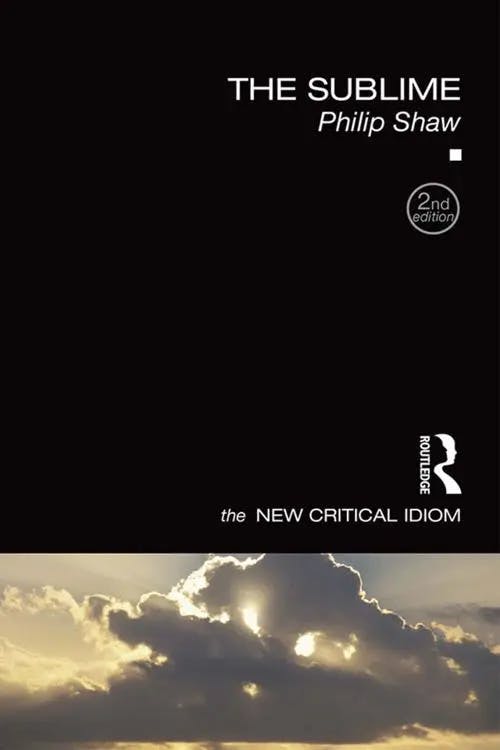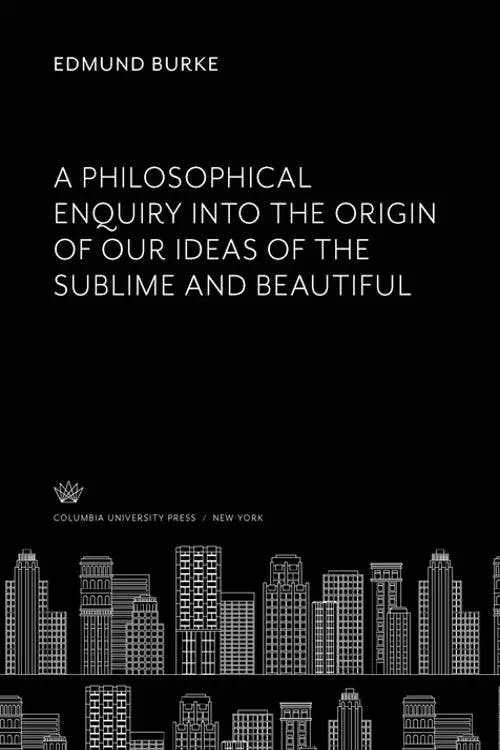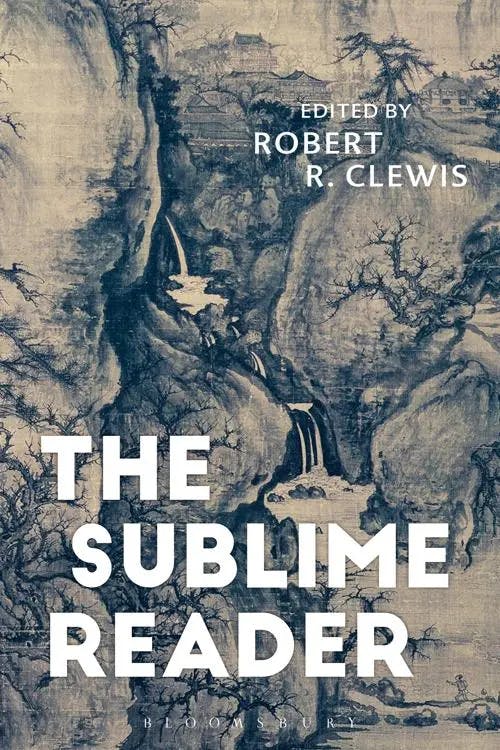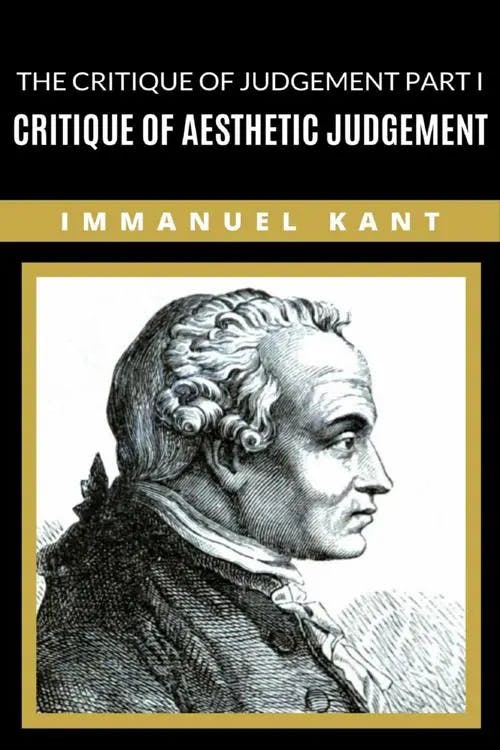What is the Sublime?
PhD, Media Arts (Royal Holloway, University of London)
Date Published: 08.03.2023,
Last Updated: 16.06.2024
Share this article
Defining the sublime
The sublime is a term used across a multitude of philosophical categories. Whether it refers to aesthetics, spirituality, morals, or metaphysics, the sublime is primarily used to describe a sense of incalculable greatness. It refers to an experience which makes us feel small, that reminds us of our own insignificance, and which compromises our rational frames of reference. Often originally associated with a transcendent, divine, or mythological encounter – a colossal storm, for example, a great landform, or a monumental cathedral – the sublime offers an experience that overwhelms our logical faculties. Philip Shaw describes such an experience in his book, where he writes,
Sublimity, then, refers to the moment when the ability to apprehend, to know, and to express a thought or sensation is defeated. Yet, through this very defeat, the mind gets a feeling for that which lies beyond thought and language. (2017)
Philip Shaw
Sublimity, then, refers to the moment when the ability to apprehend, to know, and to express a thought or sensation is defeated. Yet, through this very defeat, the mind gets a feeling for that which lies beyond thought and language. (2017)
So, the sublime is an experience that overwhelms the senses and subverts the mental frameworks we rely on to shape our understanding of the world.
The sublime has a long intellectual history. It is thought to have emerged in either the first or third century with a text by Longinus, a manuscript that Shaw describes as ‘a work of rhetorical instruction, intended to be used by politicians and lawyers seeking to inform, persuade or influence an audience’ (2017). The type of rhetoric that Longinus considers is ‘lofty’ and ‘grand’, corresponding to the Latin translation of ‘sublime’ (2017). It sought to ‘overwhelm the audience so that a weighty conception may be instilled in the mind without any bothersome appeal to reason or justice’ (2017). This may sound like a potentially manipulative linguistic approach, but what is significant is the way that the sublime was theorized, even then, to challenge our senses and evoke strong emotion; an encounter where our logical faculties succumb to the power of something beyond their comprehension.
Since then, the sublime has become associated with many prominent philosophers: Burke, Kant, Derrida, and Nietzsche, among many others. One of the prevailing philosophical challenges posed by the sublime is the particular ways in which it is vulnerable to scepticism, such as the task of empiricist explanation. How can the existence of a subjective and ineffable experience like the sublime be verified? How can this experience that transcends the reach of rational thought and language be explained? There are various means of approaching these questions, but a good place to start is by supposing that what this experience of the sublime presents us with is a different means of aesthetic judgement of the world. It describes an experience that is not pleasure and not pain, not happiness nor grief, not beautiful nor ugly, but has been thought to exist in an entirely different mode of consciousness.
Burke’s conception of the sublime
In 1757, Edmund Burke’s A Philosophical Enquiry into the Origin of Our Ideas of the Sublime and Beautiful was published. Although the concept of the sublime preceded Burke’s publication, this was an important development in the sublime as an empiricist concept. Burke examined the effects of the aesthetic experience of the sublime on our bodies and minds. He defined the sublime as a response to nature and art that brought forth ‘the strongest emotion the mind is capable of feeling’ (1958, 39). It was Burke’s assertion that this degree of emotion eclipsed sensations of aesthetic beauty and pleasure and more closely approximated sensations of ‘terror’ and ‘danger’ (1958).
"I am satisfied", Burke wrote, "the ideas of pain are much more powerful than those which enter on the part of pleasure." (1958)
Given this definition, the sublime might seem like an experience to avoid, but Burke emphasizes the complicated relationship and the close proximity between pain and pleasure, grief and joy. With this in mind, Burke proposed the sublime as not only an important human experience, but one with the potential to be quite wonderful. ‘Things which are terrible are always great’, Burke supposed (1958). In the experience of the sublime, we are faced with terror, danger – a colossal fear of the unknown and incomprehensible – which we ultimately derive pleasure from. This experience can come in a variety of forms that assault our different senses. Morose colours, loud noises, and sour stenches can all be experiences of the sublime, asserted Burke. ‘Soft’ and ‘cheerful’ colours, for example, would be ‘unfit to produce grand images’ whereas strong, dark colours might create this sense of greatness (1958). These colours alone could not account for the sublime, but they were likely to contribute such an experience. Of this, Burke wrote,
An immense mountain covered with a shining green turf, is nothing in this respect, to one dark and gloomy ; the cloudy sky is more grand than the blue ; and the night more sublime and solemn than day. (1958)
Edmund Burke
An immense mountain covered with a shining green turf, is nothing in this respect, to one dark and gloomy ; the cloudy sky is more grand than the blue ; and the night more sublime and solemn than day. (1958)
Burke exemplified the way these elements that confront our different senses might come together to create a sublime experience through a storm. The overwhelming activity of a storm – the huge, darkened sky, the whipping wind, the sudden crashes of thunder and lightning – serves to remind us of our own vulnerability, our own physical, mental, and circumstantial smallness. In the experience of a storm, our own lives are put into perspective. This is a crucial experience and something which the sublime uniquely offers.
Burke famously emphasized the difference between beauty and sublimity, asserting that no experience could be both beautiful and sublime. In The Sublime Reader, this distinction is explained:
Beauty is grounded in the passion of love and society, consists in a calming relaxation of our “nerves,” and is a response caused by an object’s (or person’s) qualities of being small, smooth, polished, light, delicate… Sublimity, by contrast, is rooted in the fear of death and desire for self-preservation and consists in tension in our nerves. It is caused by qualities such as an object’s vastness, infinity, and power. (2018)
Robert R. Clewis
Beauty is grounded in the passion of love and society, consists in a calming relaxation of our “nerves,” and is a response caused by an object’s (or person’s) qualities of being small, smooth, polished, light, delicate… Sublimity, by contrast, is rooted in the fear of death and desire for self-preservation and consists in tension in our nerves. It is caused by qualities such as an object’s vastness, infinity, and power. (2018)
This was significant because it challenged the aesthetic standards of classicism that prioritized precision, harmony, order, and restraint. Romanticism, a movement that succeeded classicism, ushered in an era of sentimental freedom, subjectivity, and expression. Where a sense of the beautiful is ‘produced’ by ‘our reasonings’, the sublime ‘anticipates’, and ultimately, defeats it (2018). Classicism, then, corresponds to Burke’s concept of beauty – that which is aesthetically pleasing due to its balanced, smooth, orderly and delicate appearance – romanticism corresponds to the sublime; that which is powerful, unrestrained, dark and emotional. Burke’s sublime became a founding concept for the early Romantics, influencing the trajectory of western culture in its wake.
The Kantian sublime
Because of Burke’s focus on the physiological and psychological effects of the sublime,
Kant considered his study as ‘an empirical psychology’ (2013). As an idealist, however, Kant was not particularly interested in the empiricist verification of the sublime object. It was Kant’s general position that reality and the outside world could not be separated from the perceiving subject; that it is the mind that shapes experience rather than the other way around. Using this epistemological concept, Kant was able to discern the universality of the sublime.
In order to do this, Kant, like Burke, considered the distinction between the beautiful and the sublime. Neither beauty nor the sublime, for Kant were features of the outside world. When we look at a beautiful flower, or experience a thunderstorm, the sensations we feel are not intrinsic physical properties of the flower or storm. Instead, beauty and the sublime correspond more to ‘conditions of perception than to qualities inherent in the sensuous world’ (2017). Both can be said to belong to a similar realm; they exist as modes of consciousness rather than features of the outside world.
In The Critique of Judgement Part 1: The Critique of Aesthetic Judgement (1790), Kant describes the difference between the two:
The beautiful in nature is a question of the form of an object, and this consists in limitation, whereas the sublime is to be found in an object even devoid of form, so far as it immediately involves, or else by its presence provokes a representation of limitlessness, yet with a superadded thought of its totality. (1790 [2020])
Immanuel Kant
The beautiful in nature is a question of the form of an object, and this consists in limitation, whereas the sublime is to be found in an object even devoid of form, so far as it immediately involves, or else by its presence provokes a representation of limitlessness, yet with a superadded thought of its totality. (1790 [2020])
Beauty is an aesthetic judgement garnered from the form of an object. When we look at a flower, we can coherently apprehend its form which our mind then organizes as beautiful. Where the sublime differs from the beautiful is that the sublime is the experience of a formless object. Like the storm or a great mountain, the very scale or infiniteness of the object might prevent us from recognizing its form, so it ceases to be understood as beauty. Beauty employs the mind’s power of sensory comprehension, of understanding, while sublimity overthrows those powers. For Kant, the sublime is that which our senses fail to apprehend, creating that overwhelming or threatening feeling of fear. This results in two very different sensations:
"The beautiful", according to Kant, "is directly attended with a feeling of furtherance of life, and thus compatible with charms and a playful imagination. On the other hand, the feeling of the sublime is a pleasure that only arises indirectly, being brought about by the feeling of a momentary check to the vital forces followed at once by a discharge all the more powerful…" (1790 [2020])
In apprehending beauty, our imagination has room to play and explore while the sublime confronts the limits of our imagination.
For Kant, the sublime fit within his crucial theory of the mind’s intrinsic ability to generate concepts. While the formlessness of a storm, a sea, a night sky, might confront the limits of our sensuous perceptions, the categories of our mind are able to conceptualize the sublime, even when our senses fail to. This ability functions independent of our experience, hence how we are able to organize the experience of something like the sublime that overwhelms our sense perception.
Romanticism and the sublime
Romanticism is a cultural movement with strong affinity to the sublime. Based largely on the work of Burke and Kant, among others, romanticism in part hoped to free artistic expression from the oppressive standards of classicism. That which we associate as ‘beautiful’, which gives us pleasure, is often assigned to a reductive classicist world view. Romanticism, however, offers an experience beyond pleasure of the beautiful. To this end, the sublime provided a profound opportunity to access a raw and unstructured emotional experience. Hence, regular ruminations and examples of the sublime can be identified in romanticist works, both theoretic and artistic. Notably, the sublime has been a framework through which to study and interpret romanticism.
In romanticism, it is typically scenes of nature that exemplify the sublime. Wanderer Above a Sea of Fog (1818) by Casper David Friedrich is a painting that has become representative of the romantic movement. It depicts a person in the foreground with their back turned to the viewer as they look out from a high precipice over a landscape enshrouded in clouds. Jagged rocks cut through the thick fog and in the background the great mountain range continues as far as the eye can see. Due to its subject matter of contemplation, subjectivity, and the natural world, Wanderer has not only become a symbol for Romanticism, but it is widely accepted to evoke the sublime. The figure in Wanderer seems to be confronted with the vast power of nature. There is something potentially threatening and frightening about this encounter; the great drop of the mountain edge, the huge jagged cliffs, the unknown landscape in a veil of fog. The subject’s smallness in the face of this incomprehensible and infinite vastness creates a sense of danger, however, the subject seems to be inviting – welcoming even – this experience. This confrontation of mortality, of vulnerability and insignificance, must offer something other than despair and fear.
Some facets of romanticism saw the natural world as the interface between the subject and God, so the sublime was an act of divine communication for which the natural world was the vessel. Hence, the vastness and power of the landscape in Wanderer could be that which Ferguson suggests, in Solitude and the Sublime, ‘affirms God’s omnipotence’ (2013). Or, the painting could depict ‘the experience of sublime pleasure in nature’ without necessitating a divine presence (2013). Whether the sublime is experienced as a moment of spiritual intervention or a stirring of deep visceral emotion, one relief that the sublime might offer is transcendence from the trappings of temporal, every-day life. A more in-depth analysis of Wanderer Above a Sea of Fog can be found here:
Wherever scenes of nature dwarf, threaten and thrill a perceiving subject in romantic works, there are suggestions of the sublime. In romanticist poetry, literature, music and visual art, the sublime stands for the purpose of freedom of expression, unrestrained emotion, and liberation from conventions of beauty. Romanticism offers an example of the way that millennia-old philosophical ideas can be implemented to change the perspective and aesthetic purpose of art.
The contemporary moment and the technological sublime
Shaw suggests that The Sublime often describes an experience that may not have much contemporary relevance. He writes that,
such instinctive feeling for the transcendental is rare these days. As a result of secularism, together with increasing global awareness and media sophistication, we seem less inclined to regard the breakdown of reason and expression as indicators of a higher or spiritual realm. (2017)
If the sublime is taken to be an experience that infers spiritualism, or an awe and wonder in the new experiences the world affords us, it is likely not as widely accepted or universally experienced as it perhaps once was. A prevailing scepticism as well as the wide dissemination of digital images might prevent us from giving the sublime much credence. This all might result in a desensitization towards the original stimulators of the sublime experience. However, theories of the sublime continue to develop alongside these advancements.
Leo Marx, for example, theorized what he dubbed the ‘technological sublime’, where we may come into contact with this transcendent power through the introduction of new technologies (1964). This is a feature of science fiction that uses new technological concepts – time machines, tractor beams, or intergalactic space travel, for example – to invoke a sense of the sublime. The same can be true, however, of our own reality. When rail or air travel was first introduced, it certainly would have been awe-inspiring in its power, challenging the reach of our comprehension of time and space (see our study guide on Time-Space Compression for more information on this topic). As humans, we quickly become accustomed to technologies that are part of daily life, but ever changing fields of industry, transportation, medicine and science may continue to confront the stretches of imagination and challenge our understanding of the world.
Technology constantly offers us new and often overwhelming experiences that then become integrated into the temporality of our lives. Art, on the other hand, may be said to have a timeless transcendental power that can repeatedly immerse the audience and evoke the sublime. Marx supposes that a feature of the technological sublime is the way in which it intrudes into nature. Perhaps, though, while the technological sublime is contingent on developments in contemporary culture and keeps pace with our rapidly adjusting judgements, arts that evoke the sublime can keep the wonder of nature alive in an ever-advancing technological age.
Further Resources & Reading on Perlego
What is the sublime in simple terms?
Who coined the term 'The Sublime'?
What is an example of the sublime?
What is the different between beauty and the sublime?
Bibliography
Burke, Edmund. A Philosophical Enquiry into the Origin of Our Ideas of the Sublime and Beautiful. 1st ed. Columbia University Press, 1958.
Clewis, Robert. The Sublime Reader. 1st ed. Bloomsbury Publishing, 2018.
Ferguson, Frances. Solitude and the Sublime. 1st ed. Taylor and Francis, 2013.
Kant, Immanuel. The Critique of Judgement Part I: Critique of Aesthetic Judgement. 1st ed. 1790.
Marx, Leo. “The machine in the garden.” New England Quarterly, 1956.
Shaw, Philip. The Sublime. 2nd ed. Taylor and Francis, 2017.
PhD, Media Arts (Royal Holloway, University of London)
Aoiffe Walsh has a PhD in Media Arts from Royal Holloway, University of London. With a background in film studies and philosophy, her current research explores British literary modernism, with a particular focus on surrealism between the wars. She has lectured and published pieces on documentary and film theory, film history, genre studies and the avant-garde.




